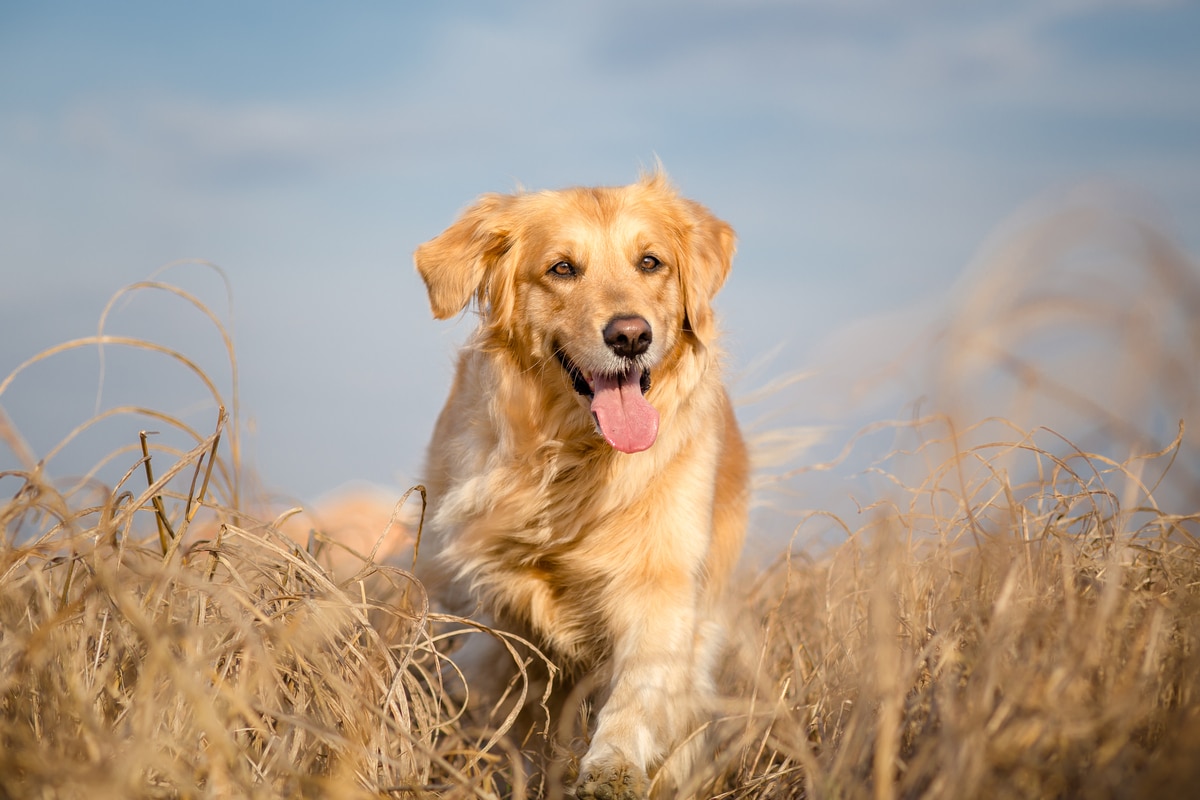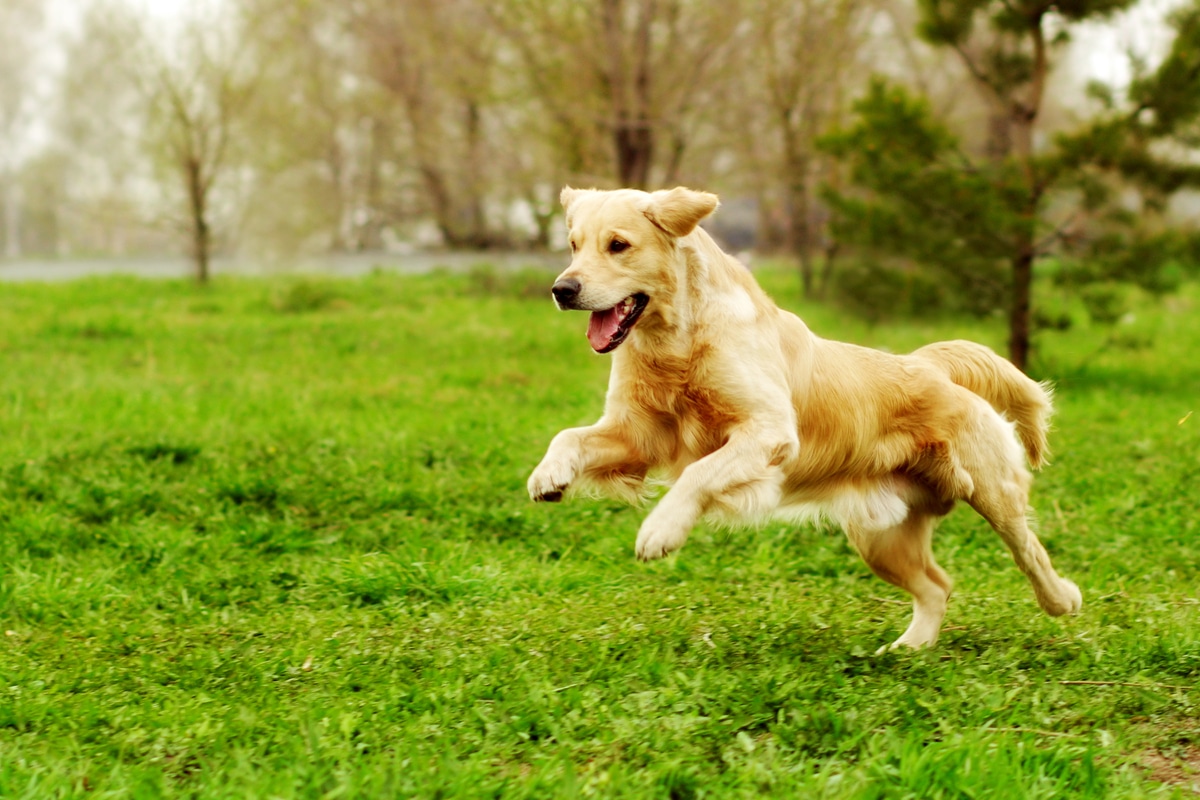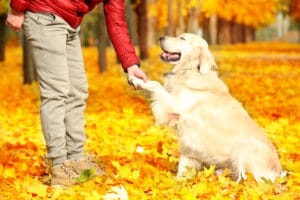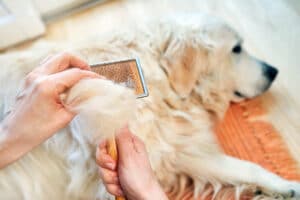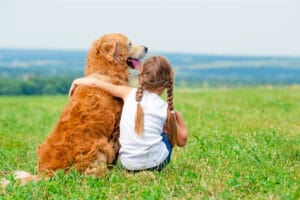When it comes to intelligence, Goldens definitely got more than their fair share. They are extremely smart, can be highly focused on certain tasks, are willing to work, and are eager to please. These traits combined make them an absolute dream to train and work with.
It’s not uncommon for a Golden to be able to recognize certain toys by their name or descriptive term and retrieve that exact toy when asked. They can also perform basic daily tasks such as opening or closing doors, picking up and delivering phones, or picking up dropped items which makes them supremely capable as service dogs.
Training should be started as early as possible with your new puppy and should focus on positive reinforcement. Offering a treat or favourite toy after a job well done is a great way to keep your Golden eager to please and willing to work, regardless of the task at hand.
Puppy Training & Socialization
While this is not just unique to Goldens, all breeds should start their training foundation off with proper socialization. Being confident in a wide range of situations and around numerous distractions can help your Golden remain focused on his training or task at hand.
Puppies should be exposed to all types of people, including those that may be wearing large hats or coats. They should also experience loud sounds such as thunderstorms, loudspeakers in a school or store, phones ringing, car horns beeping, and more. The more sounds, situations and people they are exposed to at an early age, the better adjusted and confident they will be growing up.
Mischievous Side
Goldens are extremely intelligent and know exactly what you want from them, but like a human child, sometimes they just want to goof off. Their perpetually playful demeanour can sometimes lead to “play-breaks” in the middle of a training session. And with that adorable face, it’s hard to resist letting them run around like crazy now and then!
If your Golden is prone to having these uncontrollable bursts of energy, training him to perform in agility, flyball or other events can help focus his mind as well as burn off that excess energy.

